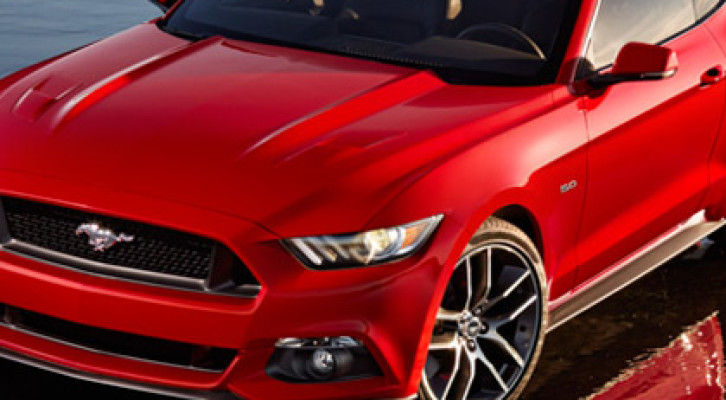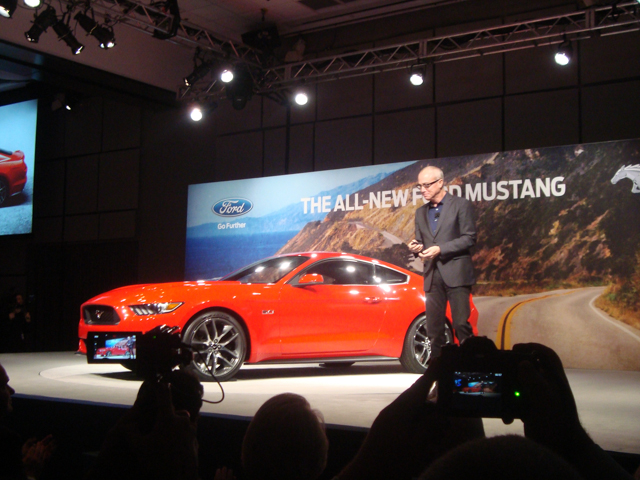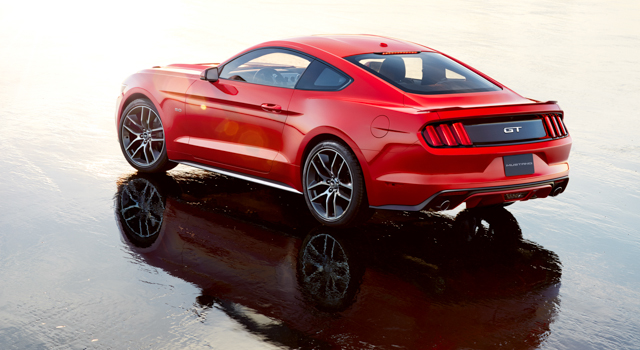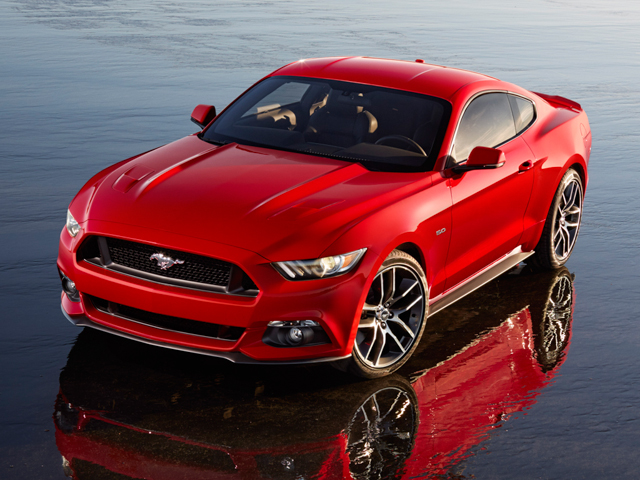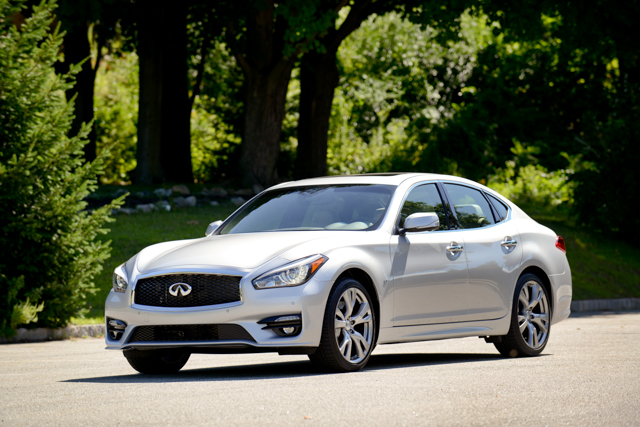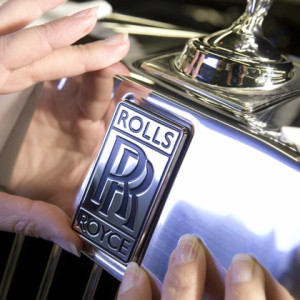Ford began the next chapter in the Mustang’s fifty-year history with a world-wide six-city reveal, in Barcelona, New York, Dearborn, MI, Los Angeles, Shanghai and Sydney. The highly anticipated evolution of the original “pony car” retains the look that made it a classic, but the Mustang is clearly pointed toward the future. In Dearborn, the new Mustang greeted the world with a traditional car-under-cover; the New York unveiling took place on Good Morning America, while in Hollywood the ponycar got to put its “handprint” on the Walk of Fame.
Instantly recognizable, the Mustang’s new face is sleeker and sharper, with a steeply angled “shark-bit” front end and dramatically sloped windshield. The new Mustang is lower and wider, and features a three-dimensional interpretation of the classic three-bar taillamps. The sequential turn signals return, of course.
Also returning are the 5.0 liter V8 and impressive 3.7 liter V6 powertrains. The Mustang GT’s 5.0 V8 is up to 420 horsepower, while the standard V6’s output remains 300 horses. An all-new 2.3 liter EcoBoost 4-cylinder is also new, with output projected at over 305 horsepower. Skeptical about a four-cylinder turbo in a Mustang? Historians will point to the Mustang SVO from 1984 and tell you not to worry. Six-speed transmissions are used across the board, with a choice of manual or automatic. The Mustang’s six-speed automatic features standard paddle shifters.
Thanks to an all-new platform, the suspension is improved as well; the Mustang now features a fully independent rear suspension. The suspension at all four corners is lightweight and nimble. The Mustang’s got bigger brakes, with available six-piston Brembos. New selectable drive modes enable the driver to fine-tune the Mustang’s steering, throttle and stability control to his or her preference, and tailor the car to conditions including wet pavement and track days. Launch Control is also available.

